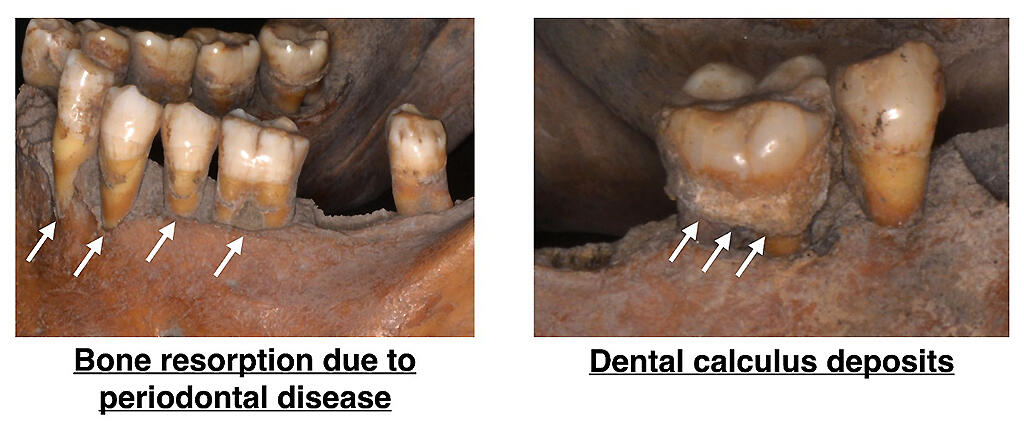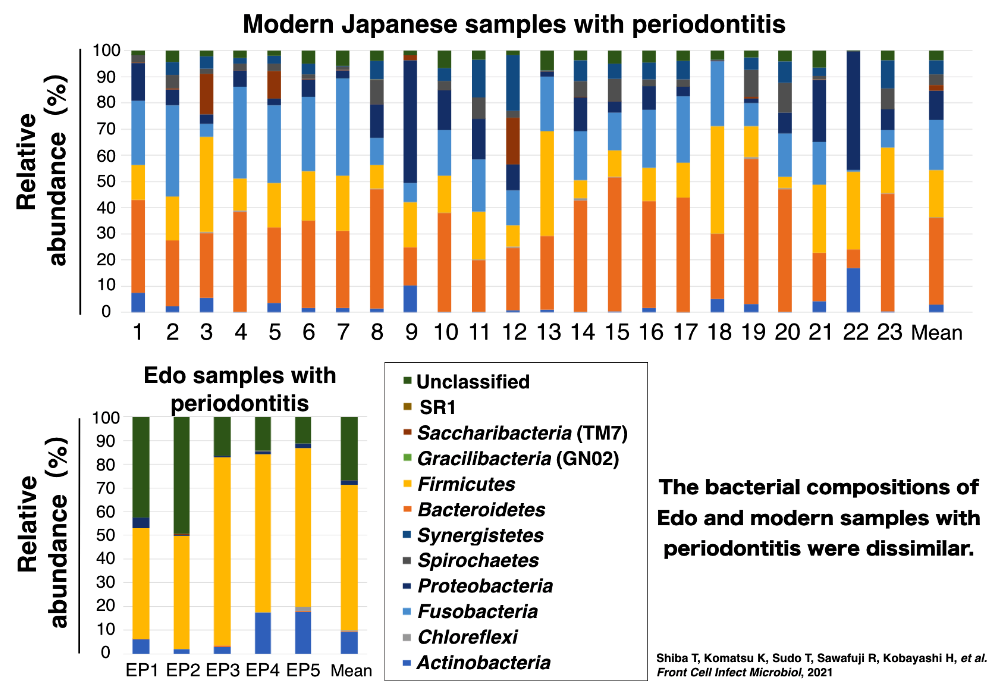People in the Edo period (1603-1867) not only suffered from periodontal disease, but they also differed from modern people in the type of oral bacteria present. This study was conducted as part of a joint research project involving a research group consisting of Assistant Professor Takahiko Shiba, Clinical Professor Hiroaki Kobayashi, Chief Professor Takanori Iwata, Department of Periodontology, and Dr. Keiji Komatsu, Department of Lifetime Oral Health Care Sciences, both departments of the Graduate School of Medical and Dental Sciences, Tokyo Medical and Dental University, and Dr. Takeaki Sudo, a specifically appointed Assistant Professor at the Integrated Education Organization. The research group also involved Rikai Sawafuji, Research Fellow of the Japan Society for the Promotion of Science, Niigata University of Health and Welfare, Aiko Saso, Professor Emeritus Shintaroh Ueda of the University of Tokyo, and Takayasu Watanabe, Assistant Professor of the University of Tokyo. The results were published in the online version of Frontiers in Cellular and Infection Microbiology.

(Shiba T, Komatsu K, Sudo T, Sawafuji R, Kobayashi H, et al. Front Cell Infect Microbiol, 2021)
The results were based on the bacterial DNA extracted from the ancient human bones and associated tartar of 12 human (tradesman) individuals in the late Edo period excavated in Fukagawa, Tokyo. The researchers revealed the prevalence of oral diseases and the bacterial composition in the oral cavity during that time. The diagnosis of periodontal disease via micro-computed tomography confirmed alveolar bone resorption, which was likely caused by periodontal disease, in more than 40% of the 12 individuals. In addition, the researchers performed a bacterial flora analysis using meta 16S analysis of DNA extracted from tartar attached to ancient human bones. The gradual changes in the bacterial composition of the oral cavity were compared to the bacterial species in the dental plaque of modern-day Japanese individuals.
Eleven strains of bacterial phyla were commonly detected in the Edo period and modern Japanese samples. In contrast, the Fusobacteria, SR1, and Gracilibacteria (GN02) phyla were detected only in modern Japanese plaque. Red complex bacteria (Porphyromonas gingivalis, Tannerella forsythia, and Treponema denticola), a group of bacteria that typically cause periodontitis, was typically detected in plaque of modern Japanese individuals but was not present in the tartar of the individuals from the Edo period.

(Shiba T, Komatsu K, Sudo T, Sawafuji R, Kobayashi H, et al. Front Cell Infect Microbiol, 2021)
The correlation between bacterial species was investigated via network analysis. The relationship between bacterial species differed between the Edo period and present day. In particular, bacteria, such as Eubacterium, Mollicutes, and Treponema socranskii, may have been characteristically important bacteria in the periodontal disease bacterial network during the Edo period. Bacterial composition in the oral cavity is altered by environmental factors that include diet and lifestyle. In addition to the fact that Japan is an island, the Edo period featured lower transmission of bacteria from foreign countries owing to the extreme restrictions on trade between Japan and other countries as a result of the national isolation policy implemented for approximately 200 years. Thus, people living in the Edo period might have had a unique bacterial composition that differed from that of the modern era.
This article has been translated by JST with permission from The Science News Ltd.(https://sci-news.co.jp/). Unauthorized reproduction of the article and photographs is prohibited.




